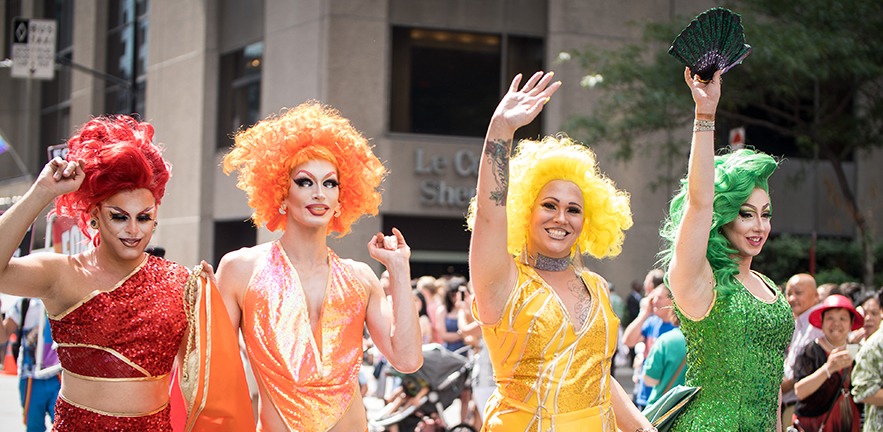Organisational stigma is better understood through the lens of ‘Straight Outta Detroit’ and ‘RuPaul’s Drag Race’, as illustrated by a special issue of the Journal of Management Studies co-edited and co-introduced by Thomas Roulet of Cambridge Judge Business School.

There has been plenty of news about companies and other organisations that are “stigmatised” – by scandal, lawbreaking or bankruptcy. These include such (in)famous names as Enron, Lehman Brothers and WorldCom, but also lesser-known episodes that taint an organisation in the eyes of customers, suppliers or other stakeholders.
But what exactly is “organisational stigma”? The idea attracted little attention until the late 1980s, and the focus has since changed significantly: the terms “stigma”, “stigmatised” and “stigmatisation” were initially used interchangeably, but now “stigma” is seen as an outcome and “stigmatisation” as a process.
A Special Issue (December 2022) of the Journal of Management Studies examines “Organizational Stigma: Antecedents, Processes and Consequences” – and an introductory article co-authored by Thomas Roulet, Associate Professor in Organisation Theory at Cambridge Judge Business School, sheds light on the evolution and implications of organisational stigmatisation.
What are the key moments in organisational stigmatisation?
Thomas, who is Deputy Director of the Cambridge MBA Programme at Cambridge Judge, has extensively studied the topic of stigma, including in his 2020 book The Power of Being Divisive: Understanding Negative Social Evaluations, which was published by Stanford Business Books.
Drawing on other research, the article outlines 2 “moments” in the process of organisational stigmatisation: “labelling” that identifies value incongruence between an organisation and accepted norms, and “enactments” of stigmatisation such as protest movements or media campaigns that seek to induce conformity with such norms or close down the tainted organisation.
How “stigmatised” differs from stigma and stigmatisation
“Unlike stigma, which is a perception held by an audience, and stigmatisation, which is a process engaged in by an audience, stigmatised is a property of the organisation,” the article says. “This distinction between actors, audiences and the targeted organisations and industries is important to maintain conceptual clarity between outcomes and processes, as well to recognise the vagaries of the English language.”
The article co-authored by Thomas, who is Deputy Director of the Cambridge MBA programme at Cambridge Judge, introduces 8 other articles that comprise the Special Edition of the Journal of Management Studies.
Stigma in motion: Detroit, motorcycles and a drag race
The articles include: “Straight Outta Detroit”, which looks at how entrepreneurs have drawn positive implications from the city’s “underdog narrative”; “We’re All Born Naked and the Rest Is Drag”, which examines the normalisation of stigma through its “spectacularisation” in RuPaul’s Drag Race, a reality TV series that searches for “America’s next drag superstar”; and “Shame on You!”, which looks at the individual and organisational implications of engaging with the Hells Angels Motorcycle Club.
Other articles in the Special Issue focus on how employees of Danske Bank navigated the stigma of being associated with the firm’s money laundering practices; how organisations manage the stigma of individuals they serve by looking at addiction treatment groups; how dealing with a stigmatised industry evolves by examining both opposition and support of US abortion clinics; and how stigma can sometimes buffer firms from market penalties due to organisational misconduct such as greenwashing.
How stigma can enlighten new phenomena and contexts
The article concludes by looking at areas for additional study into organisational stigma.
“While the literature is still evolving, it is beginning to reach a maturation phase, with stabilised definitions and links with other relevant areas of research,” the article says. “Historical and multi-level perspectives have the potential to further our understanding. “And in return, organisational stigma has the potential to enlighten new phenomena and contexts, from entrepreneurship in contested industries to geopolitical and armed conflicts.”
The study
The introductory article to the Special Edition of the Journal of Management Studies – entitled “Organizational Stigma: Taking Stock and Opening New Areas for Research” – is co-authored by by Bryant Ashley Hudson of IESEG School of Management; Karen DW Patterson of the University of New Mexico; Thomas Roulet of Cambridge Judge Business School; Wesley S Helms of Brock University; and Kimberly Elsbach of the University of California, Davis.


